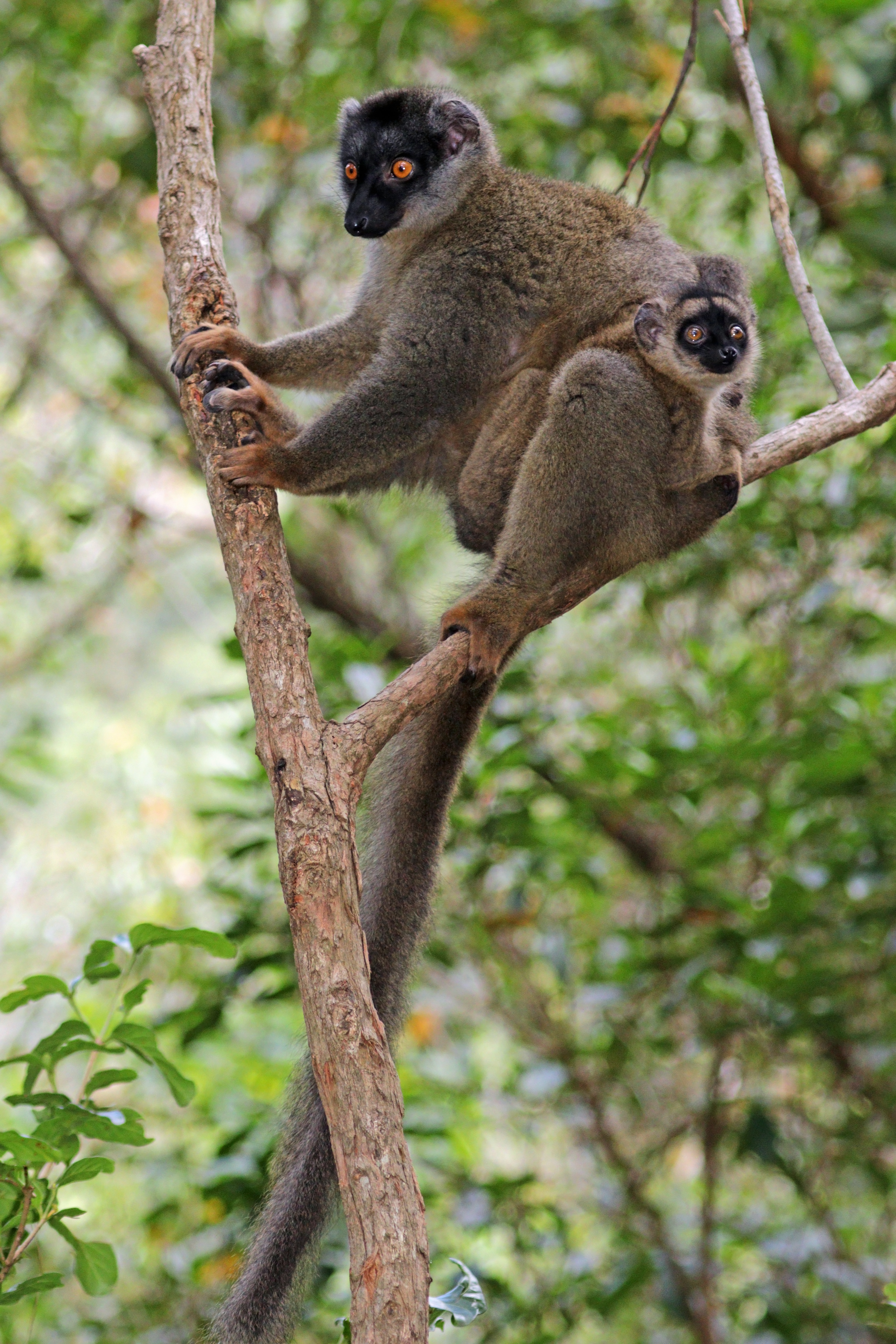True Lemur on:
[Wikipedia]
[Google]
[Amazon]
True lemurs, also known as brown lemurs, are the lemurs in genus ''Eulemur''. They are medium-sized

images and movies of the collared brown lemur ''(Eulemur collaris)''
Primate Info Net ''Eulemur'' Factsheets
primate
Primates are a diverse order of mammals. They are divided into the strepsirrhines, which include the lemurs, galagos, and lorisids, and the haplorhines, which include the tarsiers and the simians (monkeys and apes, the latter including huma ...
s that live exclusively on Madagascar
Madagascar (; mg, Madagasikara, ), officially the Republic of Madagascar ( mg, Repoblikan'i Madagasikara, links=no, ; french: République de Madagascar), is an island country in the Indian Ocean, approximately off the coast of East Africa ...
.
The fur of the true lemurs is long and usually reddish brown. Often, sexual dimorphism
Sexual dimorphism is the condition where the sexes of the same animal and/or plant species exhibit different morphological characteristics, particularly characteristics not directly involved in reproduction. The condition occurs in most ani ...
in coloration (sexual dichromatism) is seen, such as in the black lemur. True lemurs are from in length, with a tail that is as long or significantly longer than the body. They weigh from .
True lemurs are predominantly diurnal forest inhabitants, with some species preferring rain forests, while others live in dry forests. They are skillful climbers and can cross large distances in trees by jumping, using their nonprehensile
Prehensility is the quality of an appendage or organ (anatomy), organ that has Adaptation (biology), adapted for grasping or holding. The word is derived from the Latin term ''prehendere'', meaning "to grasp". The ability to grasp is likely der ...
tails to aid in balancing. When on the ground, they move almost exclusively on all four legs. True lemurs are social animals and live together in groups of two to 15 members.
The diet of the true lemurs is almost exclusively herbivorous – flowers, fruits and leaves. In captivity, they have been shown to also eat insects.
Gestation is 125 days. During the summer or early fall (shortly before the beginning of the rainy season), the females birth their young, usually two offspring. The young clasp firmly to the fur of their mother, then ride on her back when they are older. After about five months, they are weaned, and they are fully mature around 18 months of age. The life expectancy of the true lemurs can be up to 18 years, but this can be longer in captivity.
Classification
* Genus ''Eulemur'' ** Common brown lemur, ''E. fulvus'' ** Sanford's brown lemur, ''E. sanfordi'' ** White-headed lemur, ''E. albifrons'' **Red lemur
The red lemur (''Eulemur rufus''), also known as the rufous brown lemur or northern red-fronted lemur, is a species of lemur from Madagascar. Until 2001, the species ''E. rufus'' was considered a subspecies of the common brown lemur, ''E. fulvus ...
, ''E. rufus''
** Red-fronted lemur
The red-fronted lemur (''Eulemur rufifrons''), also known as the red-fronted brown lemur or southern red-fronted brown lemur, is a species of lemur from Madagascar. Until 2001, it was considered a subspecies of the common brown lemur, ''E. fulvu ...
, ''E. rufifrons''
** Collared brown lemur
The collared brown lemur (''Eulemur collaris''), also known as the red-collared brown lemur or red-collared lemur, is a medium-sized strepsirrhine primate and one of twelve species of brown lemur in the family Lemuridae. It is only found in sou ...
, ''E. collaris''
** Gray-headed lemur
The gray-headed lemur (''Eulemur cinereiceps''), or gray-headed brown lemur, is a medium-sized primate, a cathemeral species of lemur in the family Lemuridae. Until a taxonomic revision in 2008, it was known as the white-collared brown lemur or ...
, ''E. cinereiceps''
** Black lemur, ''E. macaco''
** Blue-eyed black lemur, ''E. flavifrons''
** Crowned lemur, ''E. coronatus''
** Red-bellied lemur, ''E. rubriventer''
** Mongoose lemur
The mongoose lemur (''Eulemur mongoz'') is a small primate in the family Lemuridae, native to Madagascar and introduced to the Comoros Islands. These arboreal animals have pointed faces, long, bushy tails, dark-brown upper parts, pale bellies, a ...
, ''E. mongoz''
Survival
Brown lemurs are able to survive degraded forest that would cut off their food supply through expanding their range throughout the terrain.
References
External links
*ARKiveimages and movies of the collared brown lemur ''(Eulemur collaris)''
Primate Info Net ''Eulemur'' Factsheets
Further reading
* * {{DEFAULTSORT:True Lemur